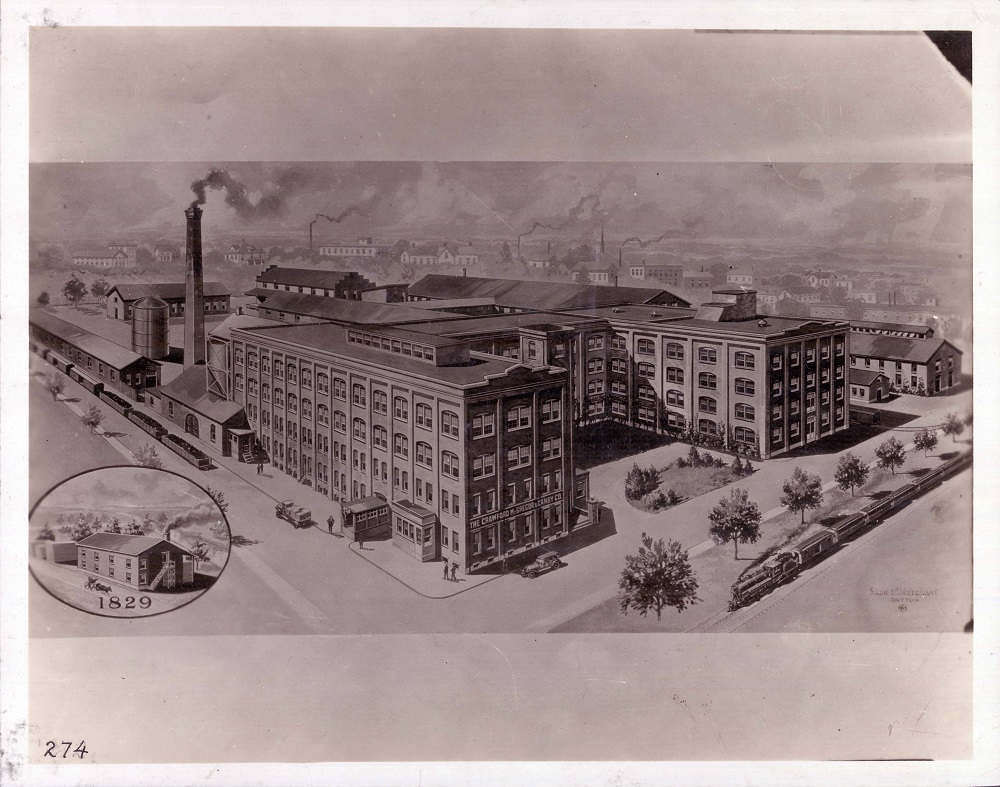
It’s no secret that Dayton was a manufacturing powerhouse in the early 1900s, but some may not know that the most dominant manufacturer of golf clubs for decades, MacGregor, operated right here in the Gem City.
Golf was not the original business, however. (And a pivot to an emerging product was common among many successful Dayton companies of this era.) The story here starts in 1829, when Archibald and Ziba Crawford came to Dayton from England and began to hand-carve wooden footwear lasts which are used in the manufacture and repair of shoes.
There was a clear market opportunity due to the fact that shoe companies had recently launched in Cincinnati and St. Louis but all of the last manufacturers were still located in New England.
At the time the Crawford’s facility was a small frame building on Main Street near Sixth (circled in the image above.)
After experiencing some initial success, the Crawfords took on the name Dayton Last Works and hired several workers to expand the operation. The firm continued for several decades until two new partners joined: John McGregor in 1874 and Edward Canby in 1886.
From Crawford, McGregor and Canby to MacGregor Golf
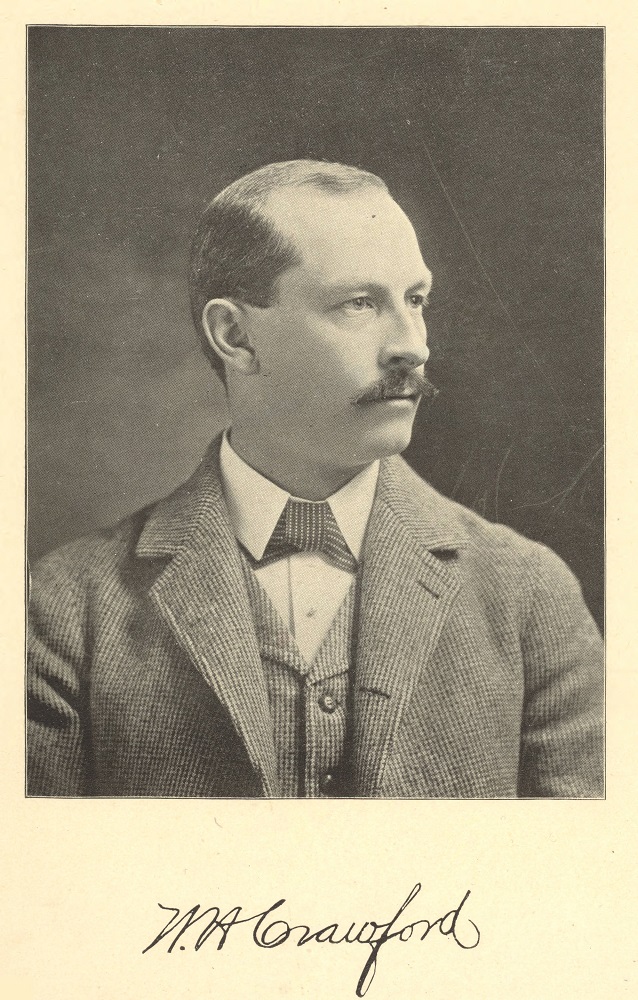
The new company, named Crawford, McGregor and Canby, began to branch out into new products in 1897.
The most important of these was golf clubs, making the company the second in America (after Spalding) to manufacture them.
At the time, club heads were made of carved wood so the transition from shoe lasts to golf clubs wasn’t as great a leap as one might assume, as explained by NW Hickory Players:
The lasts used by shoe manufacturers were made by a copying lathe, essentially the same device by which keys are today made in a hardware store. A model of the item to be copied is secured on one side of the lathe. As it turns, its contours are passed over by a stylus. A cutting tool also secured on the lathe is connected to follow the path of the stylus. In doing so, it transforms a piece of unformed material into an exact replica of the model. The copying lathe was originally invented to form irregularly shaped rifle stocks. Eventually, it was adapted for numerous other manufactured items, including shoe lasts, baseball bats, and the wooden heads for golf clubs.
Around the turn of the century, the game was still new to the United States but John McGregor, a native Scot, was convinced it was about to become big business. He lobbied to steer the firm towards golf club manufacturing, encouraging Canby to play golf in Scotland on his annual trip to Europe. Canby obliged, and came back addicted to the game and also bullish on the sport’s prospects in the U.S.
It would prove to be a shrewd move as golf did indeed boom. The first golf course in the U.S. (St. Andrews in Yonkers, New York) wasn’t built until 1888, but by 1900 there were 952 courses across the country. Two decades later that number would grow to 5,000.
The company’s use of persimmon wood for club heads and its hickory shafts were greatly successful and cemented Canby, McGregor and Crawford (CMC) products as “the benchmark of excellence” in the ensuing years.
Below is a 1919 map of the six acre Crawford, McGregor and Crawford plant in the Edgemont neighborhood that employed 50. Visible are the last department, the finishing warehouse, a reference to “golf sticks,” and more.
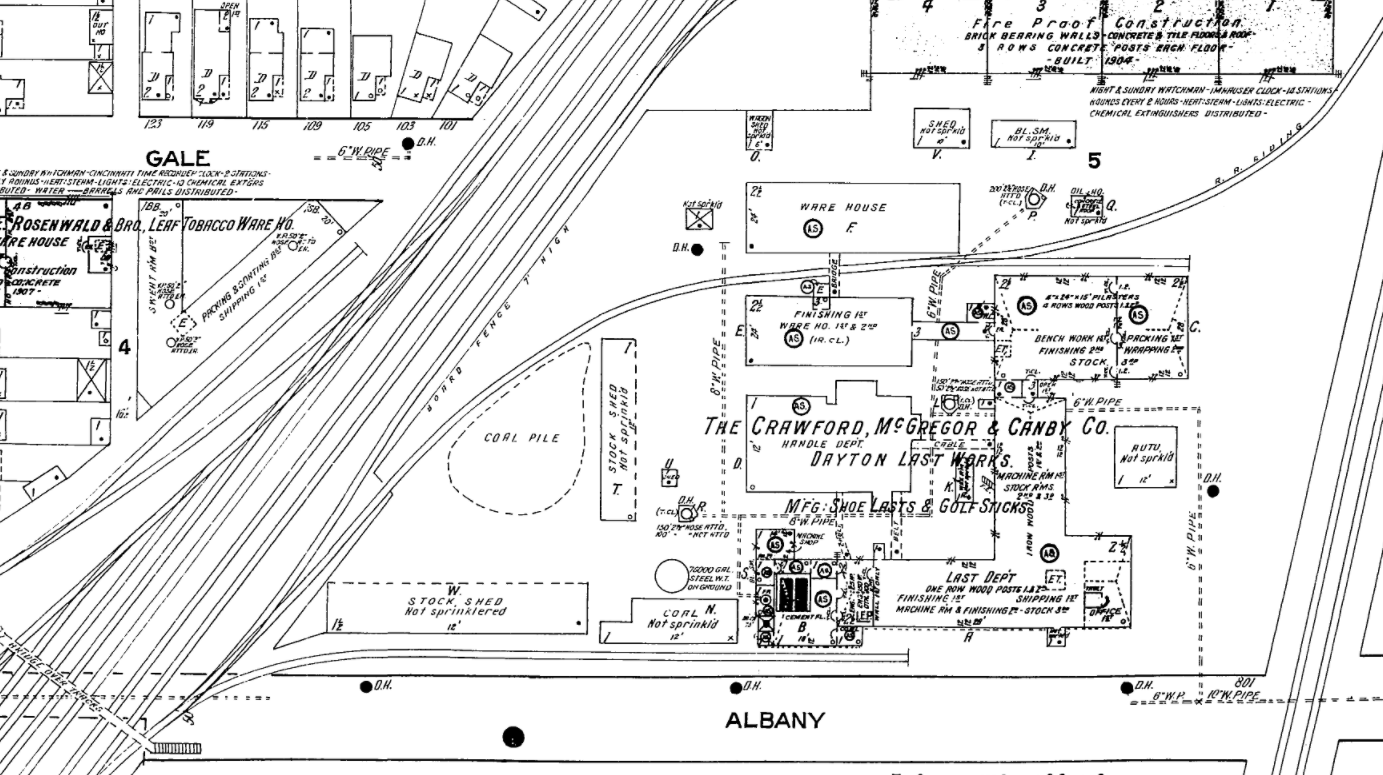
Today this location is a stretch of Albany Street that no longer exists, with highway 35 just to the north.
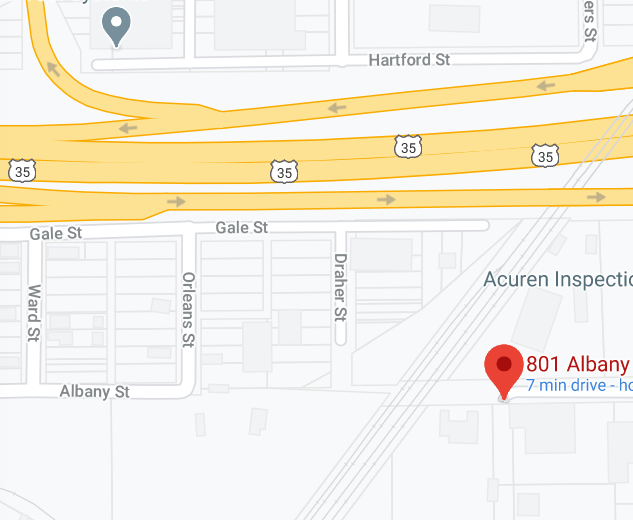
In 1922, the company opened a 9-hole golf course on Woodman Drive on the east side of Dayton. As the first company-owned course in the country, it was used by employees and also, importantly, served as a testing ground for the firm’s new equipment.
In the 1930s, Crawford, McGregor & Canby was bought by the Goldsmith Company. MacGregor Golf was retained as the official brand name, and within a decade MacGregor cemented its status as the dominant company in the industry. MacGregor pioneered the concept of the “matched set” of golf clubs, usually 3 woods and 9 irons, which would revolutionize the market.
Clarence Rickey, new head of the golf division, hired Tommy Armour who redesigned the company’s woods and whose name would go on a new line of clubs. Big name golf professionals Jimmy Demaret, Byron Nelson and Ben Hogan were added to MacGregor’s advisory staff. Just two weeks after signing on, Nelson won the 1939 U.S. Open with a set of Tommy Armour irons.
In the 1940s, MacGregor launched its own line of golf balls (which did not find much success) and for a short time even branched out into golf clothing. It would be reported that over half of PGA golfers used MacGregor clubs, and the company also claimed over 30% of the club pro shop market.
MacGregor History After Dayton
After World War II, however, the company began a relocation to Cincinnati where Goldsmith had long been headquartered, which was the beginning of the end for MacGregor in Dayton. In the 1960s a new plant was opened in Albany, Georgia which gave MacGregor four times the manufacturing capacity as its Cincinnati plant. Despite its departure from Dayton, there were numerous interesting stories relating to the company during these years.
Clarence Rickey was the cousin of Branch Rickey, the Brooklyn Dodgers executive who helped break the color barrier in baseball by signing Jackie Robinson. Clarence’s son Bob, who became president after his father tragically died in a 1945 car accident, was also progressive for his time, as MacGregor offered sponsorships to black golf professionals in the 1950s at a time when the PGA had a “caucasians only” clause in its constitution that would not be removed until 1961.
Golf legend Jack Nicklaus signed on to MacGregor in the early 60s, and he would be a major booster of the company for two decades before actually taking control of it in the 1980s.
In more recent years, MacGregor struggled immensely and was bought and sold several times by a variety of companies. Eventually it fell under the ownership of golf retailer Golfsmith International before it too went bankrupt in 2016.
Little trace of MacGregor remains in Dayton, but the remnants of the old golf course off of Woodman Drive, which was sold to Dayton Power and Light and became its headquarters, is still visible in a satellite view:
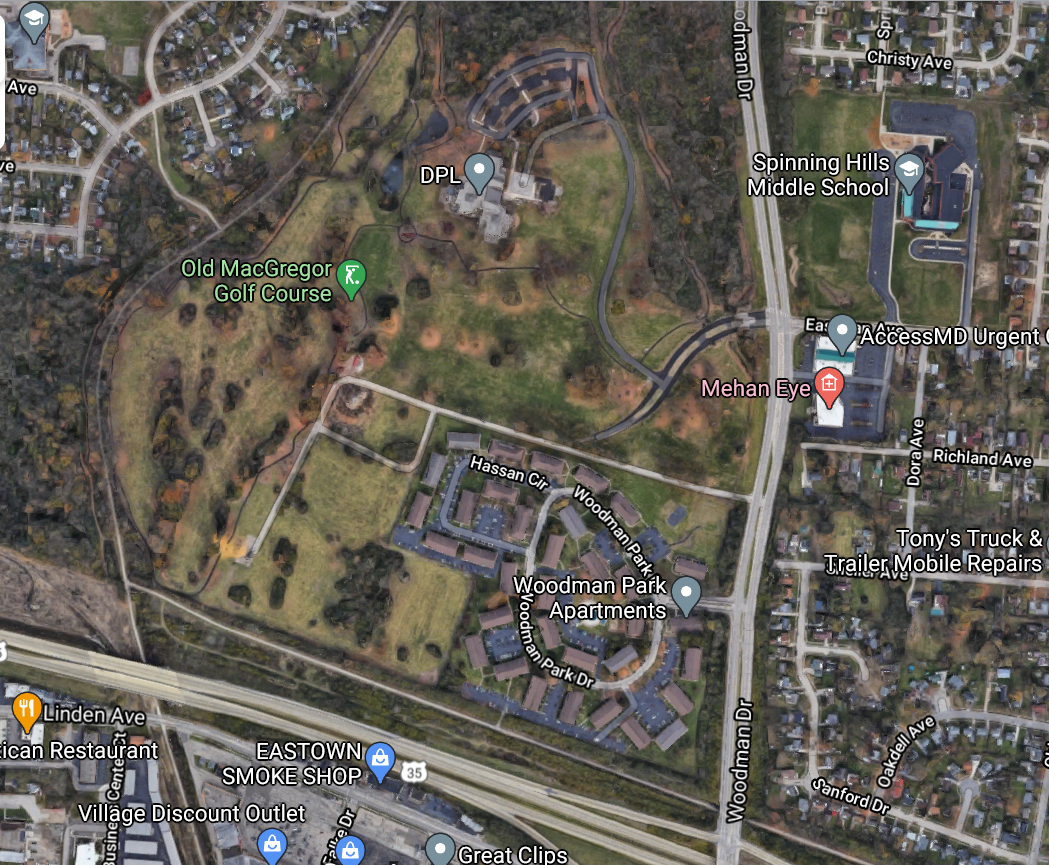
Historic images courtesy of Dayton Metro Library
Map courtesy of Ohio Web Library
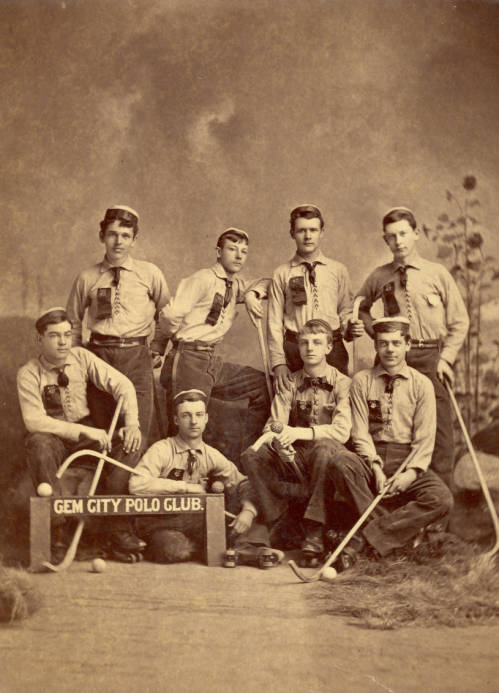

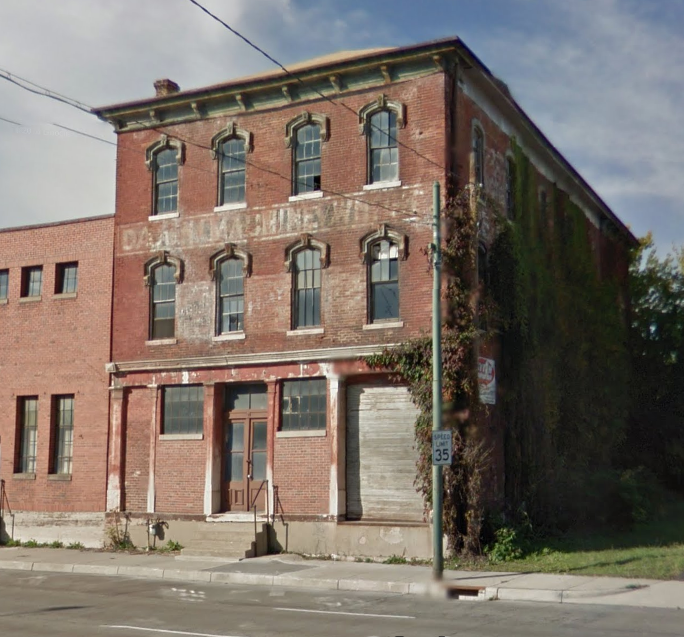

Just another piece of history that very few in Dayton know about. Unfortunately Dayton public schools do not teach any of the great history and great accomplishments of Dayton. Dayton still has the foundation to be a leader again if the right leadership was in place.